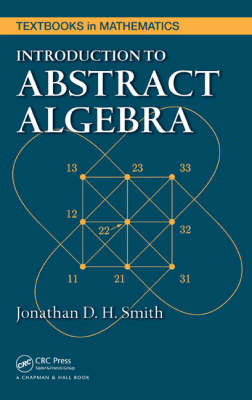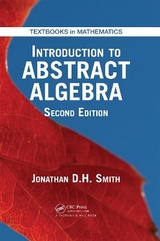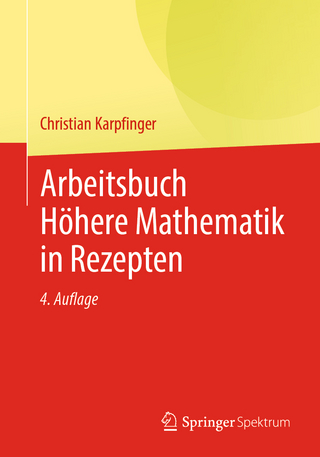
Introduction to Abstract Algebra
Chapman & Hall/CRC (Verlag)
978-1-4200-6371-4 (ISBN)
- Titel erscheint in neuer Auflage
- Artikel merken
Taking a slightly different approach from similar texts, Introduction to Abstract Algebra presents abstract algebra as the main tool underlying discrete mathematics and the digital world. It helps students fully understand groups, rings, semigroups, and monoids by rigorously building concepts from first principles. A Quick Introduction to Algebra
The first three chapters of the book show how functional composition, cycle notation for permutations, and matrix notation for linear functions provide techniques for practical computation. The author also uses equivalence relations to introduce rational numbers and modular arithmetic as well as to present the first isomorphism theorem at the set level.
The Basics of Abstract Algebra for a First-Semester Course
Subsequent chapters cover orthogonal groups, stochastic matrices, Lagrange’s theorem, and groups of units of monoids. The text also deals with homomorphisms, which lead to Cayley’s theorem of reducing abstract groups to concrete groups of permutations. It then explores rings, integral domains, and fields.
Advanced Topics for a Second-Semester Course
The final, mostly self-contained chapters delve deeper into the theory of rings, fields, and groups. They discuss modules (such as vector spaces and abelian groups), group theory, and quasigroups.
Iowa State University, Ames, USA
Numbers
Ordering Numbers
The Well-Ordering Principle
Divisibility
The Division Algorithm
Greatest Common Divisors
The Euclidean Algorithm
Primes and Irreducibles
The Fundamental Theorem of Arithmetic
Functions
Specifying Functions
Composite Functions
Linear Functions
Semigroups of Functions
Injectivity and Surjectivity
Isomorphisms
Groups of Permutations
Equivalence
Kernel and Equivalence Relations
Equivalence Classes
Rational Numbers
The First Isomorphism Theorem for Sets
Modular Arithmetic
Groups and Monoids
Semigroups
Monoids
Groups
Componentwise Structure
Powers
Submonoids and Subgroups
Cosets
Multiplication Tables
Homomorphisms
Homomorphisms
Normal Subgroups
Quotients
The First Isomorphism Theorem for Groups
The Law of Exponents
Cayley’s Theorem
Rings
Rings
Distributivity
Subrings
Ring Homomorphisms
Ideals
Quotient Rings
Polynomial Rings
Substitution
Fields
Integral Domains
Degrees
Fields
Polynomials over Fields
Principal Ideal Domains
Irreducible Polynomials
Lagrange Interpolation
Fields of Fractions
Factorization
Factorization in Integral Domains
Noetherian Domains
Unique Factorization Domains
Roots of Polynomials
Splitting Fields
Uniqueness of Splitting Fields
Structure of Finite Fields
Galois Fields
Modules
Endomorphisms
Representing a Ring
Modules
Submodules
Direct Sums
Free Modules
Vector Spaces
Abelian Groups
Group Actions
Actions
Orbits
Transitive Actions
Fixed Points
Faithful Actions
Cores
Alternating Groups
Sylow Theorems
Quasigroups
Quasigroups
Latin Squares
Division
Quasigroup Homomorphisms
Quasigroup Homotopies
Principal Isotopy
Loops
Index
Exercises, Study Projects, and Notes appear at the end of each chapter.
| Erscheint lt. Verlag | 1.10.2008 |
|---|---|
| Reihe/Serie | Textbooks in Mathematics |
| Zusatzinfo | 43 Illustrations, black and white |
| Sprache | englisch |
| Maße | 156 x 234 mm |
| Gewicht | 612 g |
| Themenwelt | Mathematik / Informatik ► Mathematik ► Algebra |
| ISBN-10 | 1-4200-6371-5 / 1420063715 |
| ISBN-13 | 978-1-4200-6371-4 / 9781420063714 |
| Zustand | Neuware |
| Informationen gemäß Produktsicherheitsverordnung (GPSR) | |
| Haben Sie eine Frage zum Produkt? |
aus dem Bereich



